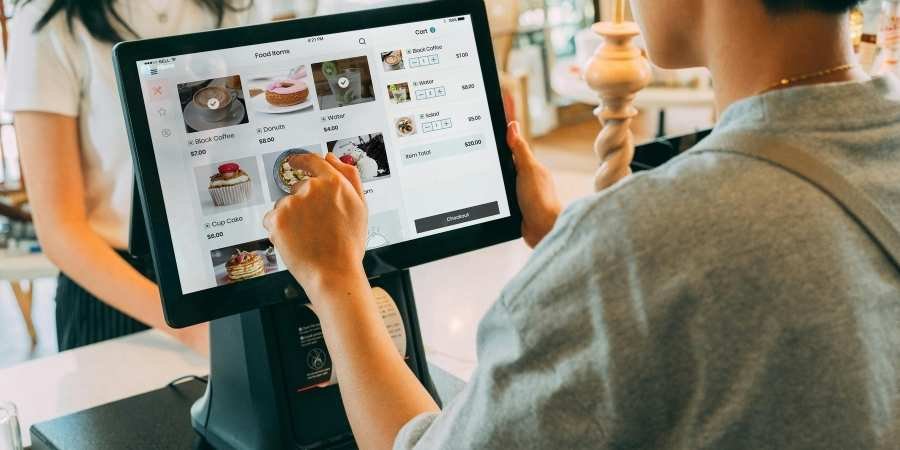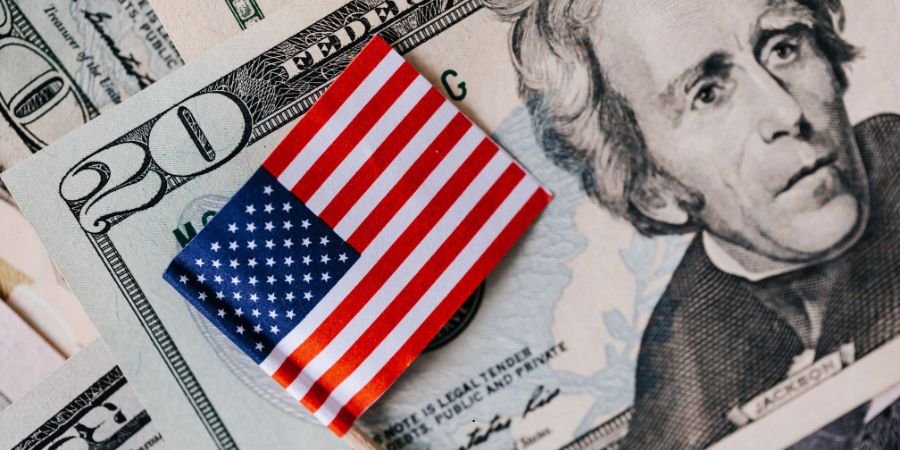Thailand serves over 3.9 million international visitors every month, and its food and hospitality industry is central to that experience. In a country where dining out is common among both locals and tourists, the speed and accuracy of food service play a critical role in customer satisfaction.
In recent years, self ordering kiosks in Thailand have started to transform the way food is ordered, prepared, and delivered. According to a 2023 report by Statista, over 70 percent of restaurant customers in Asia now prefer using digital menus or kiosks when available, citing shorter wait times and fewer errors. In Thailand, major food chains and independent restaurants alike are beginning to adopt these systems to meet growing demand for faster, more consistent service.
The shift is not only about keeping up with technology trends. It is also about responding to labour shortages, high tourist volumes, and a digital-first customer base. With smartphone penetration in Thailand reaching 93% in 2024, customers are already accustomed to scanning, tapping, and paying through their devices.
This blog explores how self-ordering technology is changing restaurant operations in Thailand, improving efficiency, and offering a more structured, reliable experience for customers and businesses alike.
What is Self-ordering Systems?
You enter a restaurant. No need to signal a server. No waiting as someone works a notepad. Instead, you touch through a screen, select what you’d like, confirm it, and pay. Your food comes quicker, the way you ordered it.
That is self ordering system in thailand – ระบบสั่งออเดอร์สินค้าด้วยตนเองในประเทศไทย. And in Thailand, it is fast becoming the norm.
Self-Ordering Kiosks in Thailand: A Growing Trend in Restaurants
Self ordering kiosks in Thailand initially entered via global chains McDonald’s and KFC. The technology provided consumers with menus to view, modifications to make, and transactions to finalize without any assistance from employees.
Later, smaller outlets emulated the pattern. Restaurants started putting self ordering kiosks in Thailand by entrances or placing tablets on tables during meals. The phenomenon is seen in shopping centers, airports, and congested food courts in Bangkok, Chiang Mai, and Phuket.
Such systems enable several customers to order at a single time. This minimizes waiting times and provides restaurants with increased order throughput during rush hours. The majority of systems are also connected with kitchen display systems in order to forward orders directly to cooks, making food preparation more streamlined.
QR Code Menus in Thai Cafes and Local Restaurants
QR code restaurant menu Thailand is now prevalent throughout the country. A customer scans a code with their phone, sees the menu, orders, and pays—all within minutes. These systems are particularly widespread in cafés, quick-service restaurants, and medium-sized Thai restaurants.
The advantage of QR code restaurant menu Thailand is obvious. Restaurants do not have to spend money on hardware. A printed code that refers to a cloud-based menu is usually enough. Pricings, ingredients, or seasonal dishes can be amended immediately.
High-resolution images, ingredients, portion sizes, and customisation choices are also part of digital menu Thailand restaurants. This eliminates confusion, particularly for tourists who are not familiar with Thai food.
Mobile Ordering in Thailand: Streamlining the Dine-In Experience
Thailand’s mobile-first mindset enables fast uptake of self-ordering technology. With the majority of customers having already adopted mobile banking, ride-hailing apps, and mobile wallets such as TrueMoney and Line Pay, mobile food ordering in Thailand comes naturally.
Most restaurants today have in-house apps or utilize third-party apps that facilitate dine-in ordering. Customers use a table-specific QR code, order, and send it to the kitchen in real time. Payment is made straight through mobile wallets or credit card gateways.
This decreases physical menu and cashier interaction requirements. It also minimizes the occurrence of order-error or delay issues. Mobile food ordering in Thailand improves efficiency during high-traffic hours and aligns with modern digital behaviour.
Customer Experience with Self-Ordering in Thailand
Online ordering has reshaped the way customers interact with restaurants. Customer experience in Thai restaurants reflects a shift in how people prefer to order. They value the ease and efficiency of ordering on their own. They are able to scroll through the menu at their own leisure, personalise meals, and circumvent the communication breakdowns that sometimes happen in busy or noisy settings.
For visitors, multilingual menus for tourists in Thailand in digital platforms enhance convenience. English, Chinese, Japanese, and Russian are commonly provided by most platforms as language options. This enables international visitors to order with assurance and enables Thai restaurants to provide a more seamless dining experience.
Visitors with dietary needs are also helped by conspicuous ingredient lists and visual explanations of menu components. Better transparency in digital menu Thailand restaurants translates to enhanced trust and satisfaction.
Advantages of Digital Ordering Systems for Thai Restaurants
Restaurants implementing restaurant efficiency tools Thailand experience various operational advantages. First, orders are more accurate when they arrive in the kitchen. When the customer types it in, the likelihood of human mistake is greatly minimized.
Second, electronic interfaces make orders more efficient. During rush hour, more than one customer may order at a time without waiting in line. Restaurants are then able to serve more customers without taking on more staff.
Third, Thai restaurant automation technology enables accurate data collection. The restaurants can follow best-selling dishes, ordering habits, and customer feedback more effectively. Managers can make strategic decisions regarding inventory, pricing, and promotional activities with this data.
Multilingual Menus and Tourist-Oriented Ordering Solutions
Tourism is a major contributor to the economy of Thailand, and food service is a significant aspect of that experience. Most tourists struggle with ordering from conventional menus as a result of language barriers or unfamiliar dish names.
Multilingual menus for tourists in Thailand address this issue. Customers can change languages by a single tap. This makes it possible for visitors to know what they are ordering, how it will be made, and what goes in it.
Visual menus with images and videos of the dishes also bridge language divides. For restaurants, it means reduced order conflicts, enhanced customer experience in Thai restaurants, and higher repeat business from international visitors.
Low-Cost Self-Ordering Tools for Small Restaurants in Thailand
Contrary to common belief, self-ordering systems for small restaurants are not limited to large chains. Several Thai startups now offer affordable digital solutions tailored for small and mid-sized restaurants. These tools often rely on tablets, QR codes, or lightweight mobile interfaces.
An example would be a Pattaya family-run iced tea store that employs a simple tablet at the counter. Customers navigate the menu, choose personalized toppings, and pay first before it is prepared. This minimizes verbal communication and enables the staff to concentrate on preparation.
These systems do not require a lot of investment. Solutions support existing devices and connect with popular Thai payment systems. This makes it easy for smaller establishments to implement restaurant efficiency tools Thailand without altering their current process.
Common Challenges in Applying Self-Ordering Technology
The advantages are obvious, but there are still realities to contend with. Where the internet connection is unreliable, digital menu Thailand restaurants will go down. This impacts speed and reliability of service.
Accessibility is another issue. Older clients or those who are not familiar with smartphones can be disoriented by self ordering kiosks in Thailand. To solve this, the majority of restaurants employ hybrid models. Staffers are on hand to assist clients through the system or receive orders manually if necessary.
Restaurant staff should also undergo training in troubleshooting and customer support. An efficiently working system should augment, rather than substitute, good hospitality.
The Future of Self-Ordering in Thailand’s Restaurant Industry
Future of digital ordering in Thailand is promising. Thai self-ordering technology will continue to expand in the next few years. New technology can be expected to encompass voice-operated kiosks, AI-driven menu suggestions, and facial recognition payments.
Restaurants will also implement backend tools that combine ordering systems with kitchen management, customer databases, and loyalty programs. This amounts to a full-service digital environment in which speed, personalization, and efficiency are combined.
Restaurants, street food markets, and food trucks are considering mobile food ordering in Thailand to cater to big crowds with fewer resources. In the years to come, even non-food companies might follow similar models for customer convenience.
Thai restaurant automation technology and self ordering system in thailand – ระบบสั่งออเดอร์สินค้าด้วยตนเองในประเทศไทย will further align with growing expectations from both locals and international visitors.
Conclusion: Digital Ordering is Shaping Dining in Thailand
Self-ordering systems for small restaurants and self ordering kiosks in Thailand are no longer new to the market. They are useful tools that enhance service quality, lessen operational stress, and address the needs of a mobile-first society.
For restaurants, it provides clarity, speed, and efficiency. For customers, it provides control, transparency, and trust in the dining experience. With continued growth and diversification of the hospitality industry in Thailand, future of digital ordering in Thailand will be a key to consistent, high-quality delivery.
The best-performing companies will be those that embrace contactless dining solutions Thailand and Thai food ordering apps with simplicity, accessibility, and long-term customer involvement.










